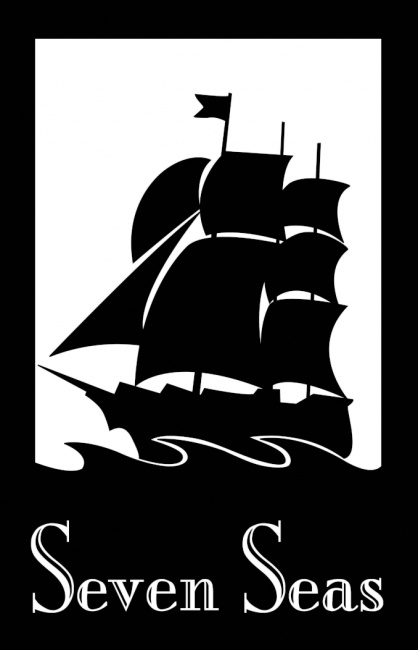Seven Seas Entertainment is a publisher of manga and graphic novels whose line includes graphic novels based on Japanese and English-language webcomics; they recently announced three new webtoon acquisitions (see “Seven Seas to Publish Print Editions of Top-Ranked Webtoons“). ICv2 talked to Sales & Marketing Manager Lianne Sentar and Webtoons Brand Manager Lissa Pattillo about how they see the audience for webtoons and how they select them. They collaborated on the answers to the questions for this e-mail interview.
ICv2: How do you decide which webtoons to bring to print?
Seven Seas: Similar to when we decide what manga and light novels to license, there are a variety of factors here: popularity in their home country, tastes in the North American market, presentation/format possibilities, staff enthusiasm, etc. Many webtoons also have official English editions available online, so that gives us even more to consider–something already popular in English is a great sign.
How do you choose foreign properties that will be a hit with U.S. readers? What do you look for in that case?
Even when franchises have truly global popularity, some stuff that’s popular overseas is proportionately less popular in North America (and vice versa), based on what readers in a particular region are looking for. Print editors also have to consider, “Maybe someone is happy to read this on their phone, but do they want a physical version on their shelf?” Beautiful art is usually an important component there (especially art that looks good in print), as is a reasonable length–if the series would be a hundred volumes in print and take a decade to catch up to the digital edition, it’s not a great candidate.
How does the number of readers online correlate with book sales?
Online platforms with easy, global access are generally going to attract a broader audience and get bigger numbers–no books need to be printed and shipped, no retailer needs to order and carry it, etc. That said, it’s not unheard of for a book to have a modest readership online and a big print readership. The people reading it online and the people coming across the story in a bookstore don’t necessarily overlap. Both are their own avenues for discovery!
How will readers of the webtoons find out about your print books?
One of the most effective and engaging ways is social media campaigns, sometimes in coordination with the original creator and/or platform. The existing fans are accessing the comic digitally, so most of the outreach to them is digital.
Which genres and styles seem to be most popular?
Romance of all kinds (straight, gay, or somewhere in-between) is big in webtoons right now, especially stuff that leans toward a female audience. The popularity of these extending to print can already be seen in one of the most famous, the English-original Lore Olympus. Fantasy series with “isekai”-like premises (tales of a modern person adventuring in a fantasy world or video-game-like setting, like Solo Leveling) can have strong audiences online and do well in print, since that’s also a very established genre for manga and light novels in North America. There are also some stand-out comedies or slice-of-life comics that are more strip-like.
How is the audience for webtoons different from that for print comics?
To compare it to manga, webtoons seem to have an especially strong female readership, and the big properties tend to be more shojo/josei. In the North American print market, the biggest manga and novel properties are instead aimed at men: shonen/seinen stuff. (Of course, people of all genders enjoy the work in both spheres.)
Is there much crossover, in terms of creators and audience?
Yes, and it’s also growing, as both the webtoons industry and the print industry look to expand into the other. You’ll see an English-original comic like Heartstopper do great in the webtoon format, in the print format, and in its new live-action Netflix adaptation. Eisner-winning Japanese manga creator Akiko Higashimura has a webtoon series (titled A Fake Affair), and DC famously launched the webtoon Batman: Wayne Family Adventures in 2021, which was just nominated for an Eisner.
Why is the webtoon audience the fastest-growing part of the comics market?
I think a huge factor is the convenience of the format. Do you have a smartphone and an Internet connection? Here: endless comics to scroll through (discreetly!) during your lunch break, wherever you are. If you look at Asian markets like Japan and Korea, there’s a huge audience of people reading comics on their phones while commuting in public transit like trains. I think newer generations in particular are adding comic reading to the many other leisure activities they do on their phone, and in North America, the boom in Middle Grade comics over the last 5-10 years has seeded millions of new readers who are comfortable reading long-form, sequential comics the way they would ingest other media (prose, TV, etc.).
How do you see the growth of this new digital format impacting the print comics business going forward?
Significantly. Digital is going to move into the print space more and the print space is going to expand further into digital. Once a channel is established and successful, fiction will adjust to reach out to that audience and meet them where they are. At Seven Seas, we’re always excited to ride these new waves and see where they lead us!
Click here for more ICv2 Webtoon Week articles!
Source: ICv2


